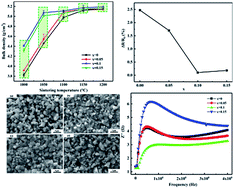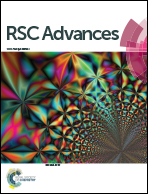Bismuth trioxide-tailored sintering temperature, microstructure and NTCR characteristics of Mn1.1Co1.5Fe0.4O4 ceramics
Abstract
Mn1.1Co1.5Fe0.4O4 ceramics with tailored sintering temperature, microstructure, and NTCR characteristics were prepared using Bi2O3 sintering additive by a solid-state reaction route. Densification and morphological characterization indicate that bismuth trioxide can play a critical role in the sintering process. The results reveal that the sintering temperature can be decreased significantly from 1200 °C to 1050 °C by using the appropriate content of Bi2O3 additive. The resistivity decreases first and then increases with increasing Bi2O3 content. The obtained B25/50 value and ρ25 ranges were 3647–3697 K, and 800–1075 Ω cm, respectively. Oxygen sorption theory can be used to illustrate the optimal thermal stability (ΔR/R0 = 0.10%). Complex impedance analysis further elucidates that grain boundaries make a dominant contribution to the total resistance. The mechanisms of grain boundary conduction and relaxation behavior are systematically analyzed. These findings open up a window for the further advancement of NTC ceramics at lower sintering temperature.



 Please wait while we load your content...
Please wait while we load your content...